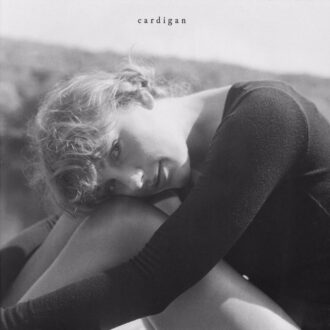James Keegan Has Built Kitchen Into A DIY Institution
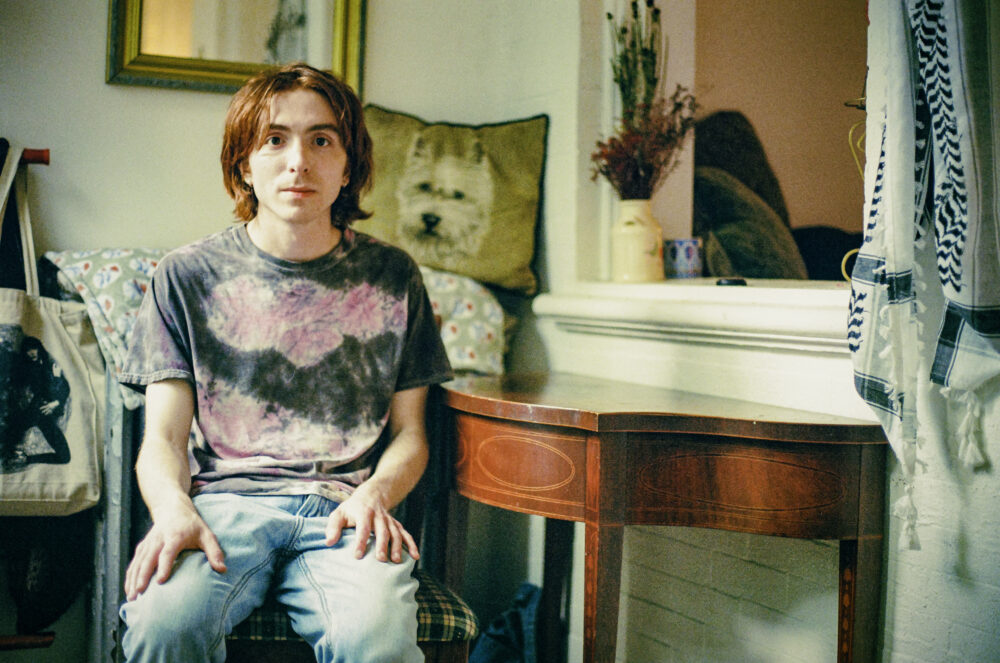
Juliette Boulay
I became obsessed with Every Noise At Once, the Glenn McDonald-created, Spotify-associated genre database, back in 2022. While the best way to use the site might’ve been to meet new-to-you musical styles from all over the world, I immediately loaded up their playlist for lo-fi indie. I’ve been drawn to homespun, fuzzy, sentimental indie rock/pop since I was a teenager in the bedroom pop boom days, so I wanted to see what the tech world considered “lo-fi indie.” There were some big names like Mac DeMarco and Alex G mixed with unsung heroes of my ’10s youth like Hello Shark and Cyberbully Mom Club. The Microphones and Duster hits were interspersed between They Are Gutting A Body Of Water and Feeble Little Horse tracks. The playlist was an endearing, genre-agnostic tour of scratchy indie, ranging from bedroom pop to screamo, that felt like it had some kind of stylistic or spiritual connection even with its extensive differences.
I was not surprised to see Kitchen on there. A dear friend introduced me to Kitchen’s music a few years prior via the 2019 album Pussy Willow, and I fell in love with the rough-hewn, pensive take on folk rock that unfurls throughout. Kitchen is Rochester, NY-based James Keegan, 26. Over the past nine years and five albums, Kitchen has been Keegan’s repository for songs that balance the timeless humanity of his hero Neil Young and the naturalistic slowcore of Bluetile Lounge. As a sort of religious practitioner of do-it-yourself, Kitchen has grown into a favorite singer-songwriter among young basement-goers, looking for someone delivering heartfelt music with a slacker-rock smirk and a talent for striking instrumental balance. To call it “lo-fi indie” is insufficient, but it’s homemade and introspective, so it’s got the right patina.
At a time when slowcore has become something of a meme and everything tagged “lo-fi” is assumed rawer and more “honest,” Kitchen is a cut above the rest. He makes that abundantly clear on his new self-released double album, April’s Blue heeler in ugly snowlight, grey on gray on gray on white. Keegan and his tight-knit circle indulge in humor while contemplating their own existence on a dying planet, varying their sonic approaches across 20 charming, thoughtful songs.
Rochester is a frigid, post-industrial city on Lake Ontario, known as the home of industrialized film photography through George Eastman’s company, Kodak. It boasts research universities on the cutting edge and acres of old manufacturing sites awaiting their new purposes. It’s fertile ground for semi-formal venues and do-it-yourselfers. One of those do-it-yourselfers became Keegan’s music North Star: Attic Abasement. Downstream of Bill Callahan and David Berman but with a rough, youthful edge that makes the band ideal for emo revival bills, Attic Abasement have become legends that can appeal both to young people searching for authentic avenues to express their frustration and indie lifers who appreciate a good story. Their music balances unseriousness with despondency in a way that only those who’ve been surrounded by regional decline can capture. Bandleader Mike Rheinheimer now plays in another band with Keegan called A Wonderful, and Keegan can’t help but think of how funny it is to play with his local idol.
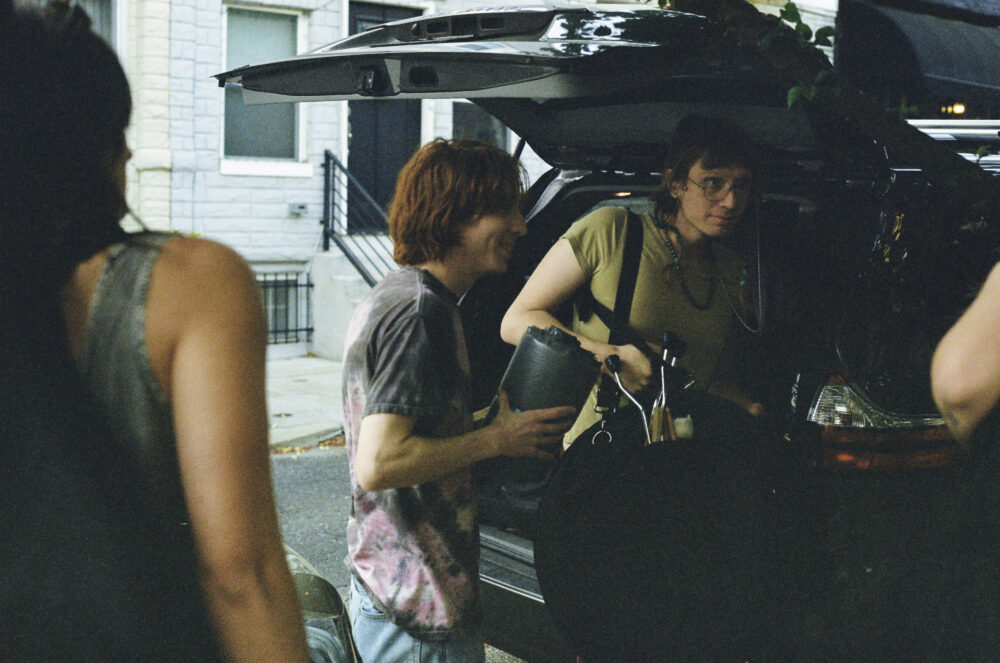
Juliette Boulay
While growing up in the city’s southern suburbs, Keegan expressed limited interest in the formalities of guitar pedagogy, much to the chagrin of his parents and instructors. Even at 10 years old, he preferred to follow his own instincts. The Rochester music scene offered the perfect ecosystem for Keegan to experiment with writing, recording, and performing throughout his high school years. He fronted a precocious experimental tweemo band called princess//princess with his buddies before starting the loner(s) shortly thereafter. Styled on streaming as The Loners With Parentheses, the loner(s) felt right at home with the do-it-yourself Bandcamp successes of the mid-10’s: Julia Brown, Coma Cinema, and other prolific uploaders of emotion-forward, lo-fi charmers.
In high school, Keegan discovered these bands and more while digitally crate-digging through Bandcamp, finding prolific artists who listed their music to download for free. He took great comfort in the 420 Love Songs compilation, the 2013 monstrosity that features everyone from Teen Suicide to LVL UP to Frankie Cosmos. The brevity of an album like Julia Brown’s To Be Close To You became something of a challenge for him: How do you so clearly convey your emotions with such to-the-point, transportive music with a DIY setup? Recording the band’s sweet and intimate songcrafting straight to tape gave every word, every drum fill, and every string flourish a piercing texture that feels like basking in the sun.
What the loner(s) put forth is similarly warm. The project’s sole full-length, 2015’s i wish shit would stop spinning, has grown into a perennial favorite for melancholy teens. Keegan included annotations with each track, offering not only the lyrics but approximate dates of recording and rough processes. The note under the six-minute ambient track “making mountains out of molehills is a good habit to get into” begins as follows: “recorded on a tuesday i think. right after finals ended.” For all its charm, the loner(s) feels distinctly adolescent. On “follow,” from the 2016 EP four new songs, Keegan mutters “I don’t know how to pretend I am okay/ I don’t know how to be okay, actually.” The track is accompanied by a video of him burning homework. Like many teenagers discovering their passion, Keegan poured everything he had into the loner(s) and grew obsessed, but also came to resent the name: “I thought it was silly.” He released a lot of material very quickly as the loner(s) between 2014 and 2016, but it was time for a change.
Starting Kitchen offered Keegan the chance to release with a blank slate, one where he could release under a more generic name that doesn’t foreground extreme emotion. He picked the name after reading the Banana Yoshimoto novel of the same name. He quietly dropped an ambient compilation on Kitchen’s Bandcamp profile, can we call this kindness, in 2016 before releasing Town at the beginning of 2017, as he was staring down adulthood. Katie Dey’s Flood Network offered direct inspiration: “I was inspired by how that album sounds so crazy and so emotional.”
You wouldn’t necessarily detect that lineage upon first listen. Town is a more subdued version of the sprightly bedroom pop Keegan had previously released, dotted with ambient interludes and youthful emotion, but also a more folksy delivery on songs like “November Prayer” and “Pike.” There’s warmth from pianos and electronics, there’s tape hiss, but Keegan and his guitar feel more central than ever. Town feels similar to much of his output as the loner(s), but Keegan upped the intentionality, writing and recording at a more measured pace and getting the details, down to the visuals, exactly to his liking. The album is its own little world, with bedroom ambient gluing it all together. Town is a harbinger of the slowcore/folksy rock-oriented project that Kitchen remains, and that emotional candor he honed as a teenager never truly goes away, but he does a much better job of placing his feelings in context these days.
As Town and his material as the loner(s) retains outsized popularity on streaming platforms, Keegan maintains an uneasy relationship with the music he released when he was not even an adult. “When I realized that people were getting really into it recently, I was like ‘I have new music, and it’s better.’ But I understand why people like it so much,” he reflects. Fundamentally, he wants to remain a good steward of it. “When I was putting the vinyl packaging together,” Keegan explains, “I was thinking about what I would’ve wanted it to look like back then rather than what I’d want now. It’s still weird to get into that headspace from almost 10 years ago.” He sought advice from Francis Lyons of ylayali on how to press vinyl independently and affordably. ylayali’s physicals have served as inspiration to Keegan more than once; he got the idea for Blue heeler’s double-cassette in a butterfly case from the Picked Apart/Pumpkin Patch double EP release. To date, Town is Kitchen’s only album pressed to vinyl, and Keegan hopes it won’t be the last.
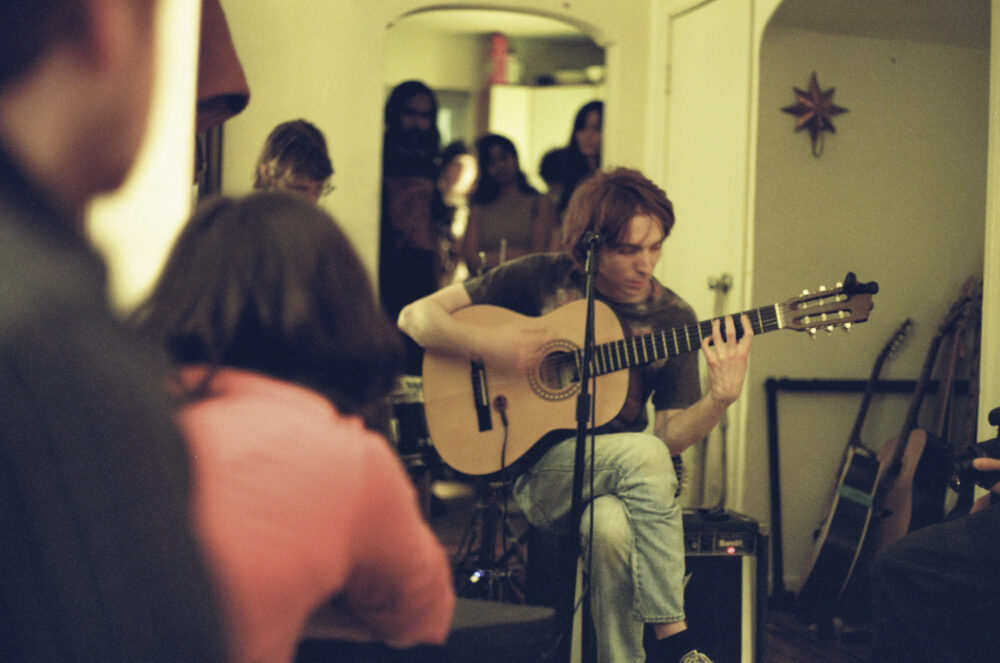
Juliette Boulay
2019’s Pussy Willow starts with a more pronounced stylistic shift. “Down” features a tape machine choir courtesy of Harvey Waters and harmonies from girlfriend Sabrina Nichols, leader of her own undersung band Shep Treasure. The banjo and piano move at a snail’s pace. The song has the profundity of a Codeine cut with the off-kilterness of Carissa’s Wierd. The next track, “Claws,” is more of a gentle saunter, one where strings frame Keegan’s sincere crooning. Stylistically, this is where Keegan’s songs at Kitchen tend to fall: Some are sprawling, illustrious slowcore numbers extending well over six minutes, and others are more moderate, folksier songs where Keegan’s voice occupies a more prominent position. Dreamy, tape-warped interludes in the bedroom pop style make appearances, but something like “A Vampire” sounds more like MJ Lenderman than the loner(s). The variety on Pussy Willow is notable but narrow: Like Julia Brown, Keegan wanted his albums to make a statement, as he says, “in one sentence.” Early Kitchen albums are carefully crafted to keep songs that are more obvious spiritual siblings together.
On 2020’s Halloween In August and 2023’s Breath Too Long, plus EPs and loosies in between, Keegan retained that zeroed-in folk rock/slowcore balance, performing predominantly at the intersection of both styles while occasionally leaning into one or the other depending on which element he preferred to emphasize. He recorded each song in his home, but exactly how “lo-fi” they were varied. 2022’s “Never Going Home” and 2023’s “Right Away, The Morning” have that undeniable haze that made Keegan’s early material glow, but more and more, Keegan’s records exhibited stark clarity. “Two Hundred Thousand” off of 2020’s Halloween In August is exemplary: Every drum hit feels like it’s happening right next to you; the slur in Keegan’s voice makes it sound like he’s performing in a college kid’s basement unmiked. To say that Kitchen songs aren’t “overproduced” doesn’t do justice to their sparsity. Their gossamer character and raw delivery are essential to their construction and appeal; it is “lo-fi” in the sense that Keegan delivers a product that appears totally unrefined.
Blue heeler in ugly snowlight, grey on gray on gray on white. is a level up. Where prior Kitchen albums have been valiant one-disc efforts, Blue heeler is a double album. Where early Kitchen albums offered a youthful candor, Blue heeler is more emotionally measured. If early Kitchen songs helped channel everyday melancholies that come with growing up, Blue heeler’s songs show a man marooned by climate anxiety but still indulging in humorous, pressure-relieving babbles. Spreading out over two discs lets Keegan pendulate between his two preferred extremes, and while most songs inhabit some place in between, each is a stepping stone that gives every other songs permission to slow down or speed up, to stay minimal or blossom into mini-symphonies. His slowcore passages are even more drawn-out (“Sali”) and his folk songs are even more threadbare (“Houses In The Clouds”). Songs like opener “Seaglass Wish” seamlessly merge his characteristic unhurriedness with the humanism of folk performance. His performance is reminiscent of one of his heroes, Phil Elverum, and his talent for knowing when to bring out the electric guitar and when to keep it delicate recalls Adrian Orange.
Prior Kitchen albums have minimal passages, but Keegan recorded Blue heeler with as clear and stripped-back recording as possible, trying to make each song sound as if he’s performing in the same room as the listener. “On previous albums, I’d layer things to make it sound thicker,” says Keegan. “With Blue heeler, I wanted it to reflect the sound of me just playing the song in a room.” Of the album’s 20 songs, only “Bike Uphill” was recorded live, with Nichols on guitar and longtime pal Leaphe Ferm on percussion. That said, the other 19 still feel very proximate. Kitchen’s bedroom pop-leaning songs, like Town’s title track, sound small, but not necessarily minimal: Recording to tape adds its own element, plus the metronome and keys humming beneath Keegan’s face. Compare that to “Seaglass Wish,” which features Keegan’s delicate guitar-picking and solemn voice in spurts, leaving gaps of negative space. Even when he adds new sounds, there’s no fuss. Blue heeler is unadorned, unhurried folk rock, unbeholden by the trappings of bedroom aesthetics or the need for a fixed statement.
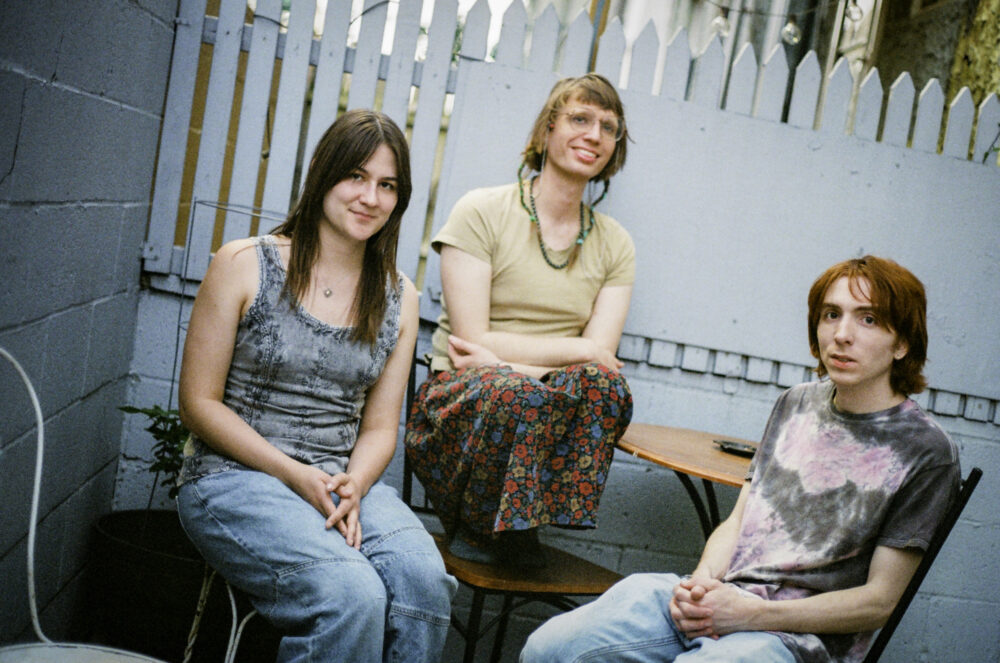
Juliette Boulay
“At first, I thought I’d need to separate the songs that sounded more like proper slowcore, like ‘Sali’ or ‘Book Of Summer,’ needed to be its own, darker thing, and then the folk-sounding stuff would be a different thing,” Keegan explains. “But, I was listening to Wowee Zowee by Pavement a lot and appreciated how it was all over the place with a lot going on. Same with The Runners Four by Deerhoof.” With prior albums, that love for Julia Brown’s brevity stayed in the back of his mind, reminding him that his favorite albums tended to say what they wanted in one coherent statement. He threw that away for Blue heeler. Most songs meditate on a general malaise he feels, fueled by climate anxiety and a political landscape that feels designed to do the most harm. He made sure to throw in lighter notes, too. “Sali” comes from Keegan’s encounter with an unusual candy: “My friend who runs [Rochester DIY space] the Psychic Garden bought Salmiakki to sell at the door at shows – I tried it and it’s got this crazy, salty flavor. It’s a licorice candy made with salmiak salt.” “Coldest Beer In Town” was inspired by a joke from the 1990 horror film Tremors; Keegan expands on the joke with lyrics that felt good in a swinging, country-inspired melody.
To celebrate Blue heeler, Kitchen planned a 22-show tour over the span of a month, far longer than his usual weekender on the east coast DIY circuit. After testing many configurations for these songs, Kitchen settled on a three-piece: Keegan on guitar and vocals, Nichols on guitar and bass, and Ferm on drums and keys. The first West Coast Kitchen shows are a part of this tour. It’s ambitious, but so is Blue heeler. It’s a testament to what the kids who fell in love with the lo-fi bedroom indie of the mid-’10s built when they switched to darker, more contemplative sounds while retaining their DIY instincts. Clearing the brush and letting your words and melodies do the work expresses a commendable appetite for vulnerability, and it helps that the songs are as memorable as they are honest. Much as the bedroom indie that Keegan liked in his adolescence emerged from indie stalwarts going back to basics, Kitchen’s generation of basement indie is a peculiar amalgamation of folk, slacker rock, slowcore, and other traditions that are conducive to unvarnished, thoughtful expression on a DIY scale.
Blue heeler in ugly snowlight, grey on gray on gray on white. is out now via okwhatever. Buy it here.



